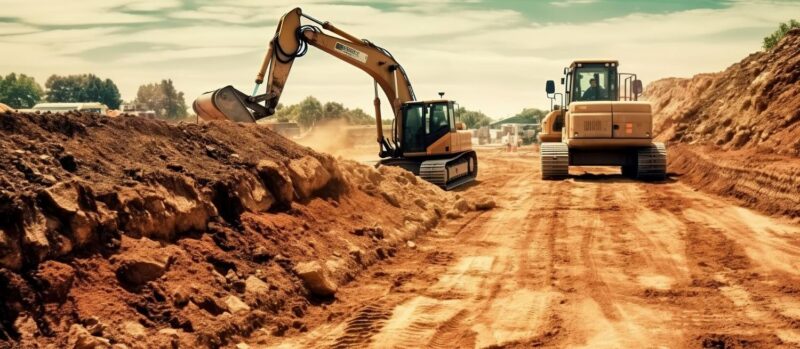Building a house in Kenya is an exciting and rewarding venture, offering the opportunity to create a home tailored to your specific needs and preferences. Whether you’re constructing a modest home or a luxury property, understanding the process is crucial to ensure a successful and budget-conscious build. This guide will walk you through every step of Building a House in Kenya, providing you with essential insights to navigate the complexities of the Home Construction in Kenya journey.
Why Build a House in Kenya?
Kenya’s rapidly growing economy, combined with an increasing demand for housing, makes Building a House in Kenya an appealing option for many. Unlike buying a pre-existing home, building from scratch allows you to customize the design, select materials, and control the budget, which can result in significant cost savings.
Some of the reasons why Building a House in Kenya may be more advantageous than purchasing one include:
- Customization: You can create a home that perfectly suits your needs, including the size, layout, and style.
- Cost-Effectiveness: With proper planning, building can be more affordable than buying an already built home.
- Investment: A well-built house can be a great long-term investment that increases in value over time.
For more insights on the various housing options in Kenya, you can explore Demystifying Affordable Housing and Home Ownership in Kenya.
Key Steps to Building a House in Kenya
The process of Home Construction in Kenya can be broken down into several stages, each crucial to the overall success of your project. By following the steps outlined below, you can ensure that your dream home is built efficiently and within budget.
1. Land Acquisition and Selection
The first and most important step when Building a House in Kenya is acquiring land. The location, size, and terrain of your land will significantly influence your Home Construction Kenya project. Here are some considerations to keep in mind:
- Location: Consider proximity to essential services like schools, hospitals, and transportation. Choose an area that aligns with your lifestyle needs.
- Size and Zoning: Ensure that the land size is sufficient for your intended house size. Verify whether the land is zoned for residential development.
- Topography: Evaluate the land’s terrain to ensure it is suitable for construction. Flat land is easier and less expensive to build on compared to sloped or rocky terrain.
Once you find the right land, ensure that the title deed is clear and that the property is not involved in any legal disputes. Seek professional help, such as a lawyer, to verify the legitimacy of the land.
2. Legal Documentation and Approvals
Before proceeding with any construction, ensure you have the necessary legal documentation in place. In Kenya, Home Construction Kenya without proper permits can lead to legal issues, including fines or demolition orders. These are the essential documents and approvals required:
- Land Ownership Documents: Ensure that you have a copy of the title deed and confirm ownership of the property.
- Building Permits: Apply for the necessary building permits from the local authority. This typically includes submitting your building plan for approval.
- Environmental Impact Assessment (EIA): For certain types of construction, an EIA may be required to assess the environmental impact of the project.
It is also important to understand the legal implications of affordable housing schemes. For more information on affordable housing eligibility criteria and the application process, see our article on Affordable Housing Kenya: Eligibility Criteria and How to Apply.
3. Developing a Building Plan
The next step in Home Construction in Kenya is creating a building plan. This plan outlines the structure, dimensions, and layout of your home. You can either choose a pre-designed plan or work with an architect to develop a custom plan that suits your needs. When developing a building plan, consider:
- Functionality: Ensure the layout suits your lifestyle, including the number of rooms, their sizes, and their placement.
- Aesthetic Appeal: Choose a design that reflects your personal style, whether modern, traditional, or a mix of both.
- Budget: Make sure the design aligns with your financial capacity. Complex designs may cost more in terms of materials and labour.
4. Budgeting and Financial Planning
A detailed budget is critical when Building a House in Kenya. Financial planning helps you estimate the cost of construction and identify any areas where you can save. Consider the following costs:
- Land Cost: This is the largest initial expense and will depend on the location and size of the property.
- Construction Materials: Costs for building materials, including cement, bricks, roofing, and finishing materials.
- Labor Costs: Hiring skilled labor for tasks such as masonry, plumbing, and electrical work.
- Contingency Fund: Always set aside a contingency fund (around 10-15% of the total budget) to cover unexpected expenses.
If you’re unable to cover the full cost upfront, consider applying for a construction loan from a bank or financial institution. Many lenders offer specialized loans for Home Construction Kenya projects.
For further details on financing options and homeownership costs, read The True Cost of Affordable Housing in Kenya.
5. Site Preparation and Clearing
Once your building plans and permits are in place, it’s time to prepare the land for construction. This stage involves clearing the site of vegetation, rocks, and other obstacles. Depending on the land’s condition, site preparation may include:
- Vegetation Removal: Clearing trees, shrubs, and grass to make way for construction.
- Excavation: Digging trenches for the foundation and leveling the land if necessary.
- Access Roads: Ensuring there’s a clear path for construction vehicles and workers to access the site.
6. Laying the Foundation
The foundation is the most critical part of any house. It serves as the base for the entire structure and must be carefully designed and constructed. There are several types of foundations commonly used in Kenya:
- Strip Foundation: Commonly used for single-storey homes, this foundation involves digging trenches along the perimeter of the house and filling them with concrete and steel reinforcement.
- Raft Foundation: Suitable for larger buildings or areas with poor soil, the raft foundation involves a concrete slab that covers the entire area of the house.
- Piled Foundation: This is used for areas with weak or unstable soil, where deep piles are driven into the ground to provide support.
Work with a qualified structural engineer to ensure the foundation is strong and suitable for the house design.
7. Building the Superstructure
The superstructure refers to the walls, columns, and other components that support the roof. During this phase, the construction team will:
- Erect Columns: These vertical supports help distribute the weight of the roof and upper floors.
- Construct Walls: Depending on your preference, walls can be made from concrete blocks, brick, or stone. Ensure that the materials used are durable and weather-resistant.
- Install Lintels: Lintels are beams placed above doors and windows to support the weight of the structure above them.
8. Roofing and Waterproofing
Roofing is a critical stage in the construction process, as it protects the house from the elements. Common roofing materials in Kenya include iron sheets, tiles, and concrete. The roofing process involves:
- Framing the Roof: Constructing the roof structure, which may include trusses or rafters.
- Waterproofing: Applying a waterproof coating to the roof and walls to prevent leaks and water damage.
9. Electrical and Plumbing Installation
Once the roof and walls are in place, it’s time to install the electrical wiring and plumbing systems. These systems must be carefully planned and installed to ensure safety and efficiency:
- Electrical Wiring: Hire a certified electrician to install wiring for lighting, outlets, and appliances.
- Plumbing: Install pipes for water supply and drainage, ensuring the system is leak-proof and functional.
10. Interior and Exterior Finishing
After the basic structure is complete, it’s time to focus on finishing touches:
- Interior Finishing: This includes plastering the walls, installing flooring, painting, and adding any decorative elements.
- Exterior Finishing: Apply paint or render to the external walls to protect them from weather damage.
11. Final Inspections and Approvals
Before moving in, your house will need to pass a series of final inspections to ensure it meets all safety and building standards. These inspections are typically conducted by local authorities, and may include:
- Building Safety Inspections: Checking the structural integrity of the house.
- Utility Connections: Ensuring that electricity, water, and sewage systems are properly connected.
Once your house passes these inspections, you can apply for an occupation certificate, allowing you to officially move in.
Common Challenges When Building a House in Kenya
Home construction in Kenya comes with its share of challenges. Some of the most common include:
- High Material Costs: The cost of construction materials in Kenya can fluctuate, making it difficult to stick to a budget.
- Delays: Construction projects can face delays due to weather, labor issues, or delays in the supply of materials.
- Legal Hurdles: Navigating the legal requirements for building permits and land acquisition can be complicated.
Conclusion: Making Your Dream Home a Reality
Building a House in Kenya is a significant endeavour, but with careful planning, professional advice, and persistence, it is possible to create a beautiful home that meets your needs and budget. From securing land and legal documentation to overseeing the construction process, every step is crucial to ensuring the success of your project. For more guidance on Home Construction in Kenya, consider consulting with a local construction expert or contractor who can provide personalized advice.
This article is intended for informational purposes only and does not constitute legal, financial, or professional advice. While every effort has been made to ensure the accuracy and completeness of the information provided, we make no guarantees and accept no liability for any errors, omissions, or actions taken based on this article. Prospective homebuyers are encouraged to seek advice from qualified professionals and official sources before making any decisions.












